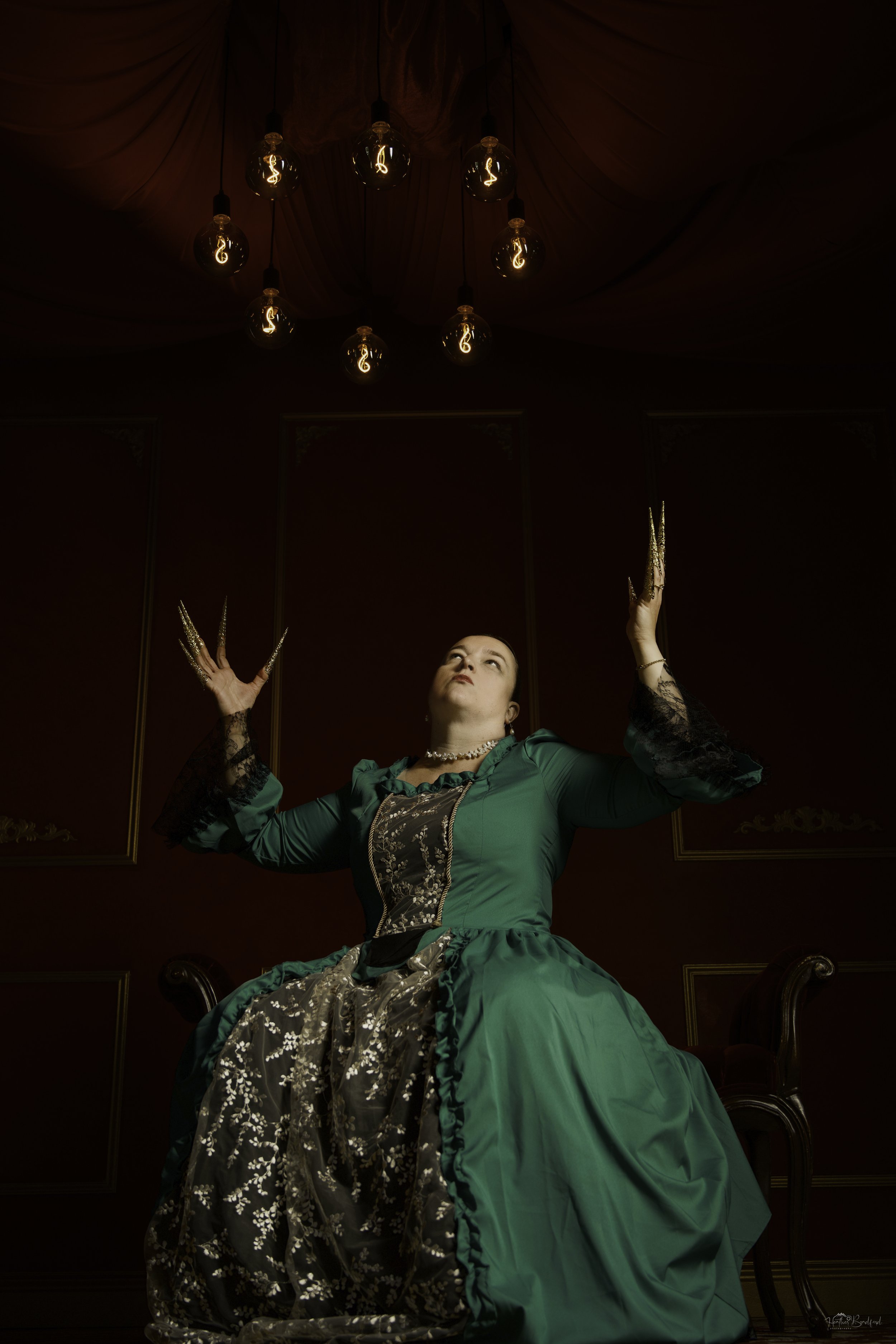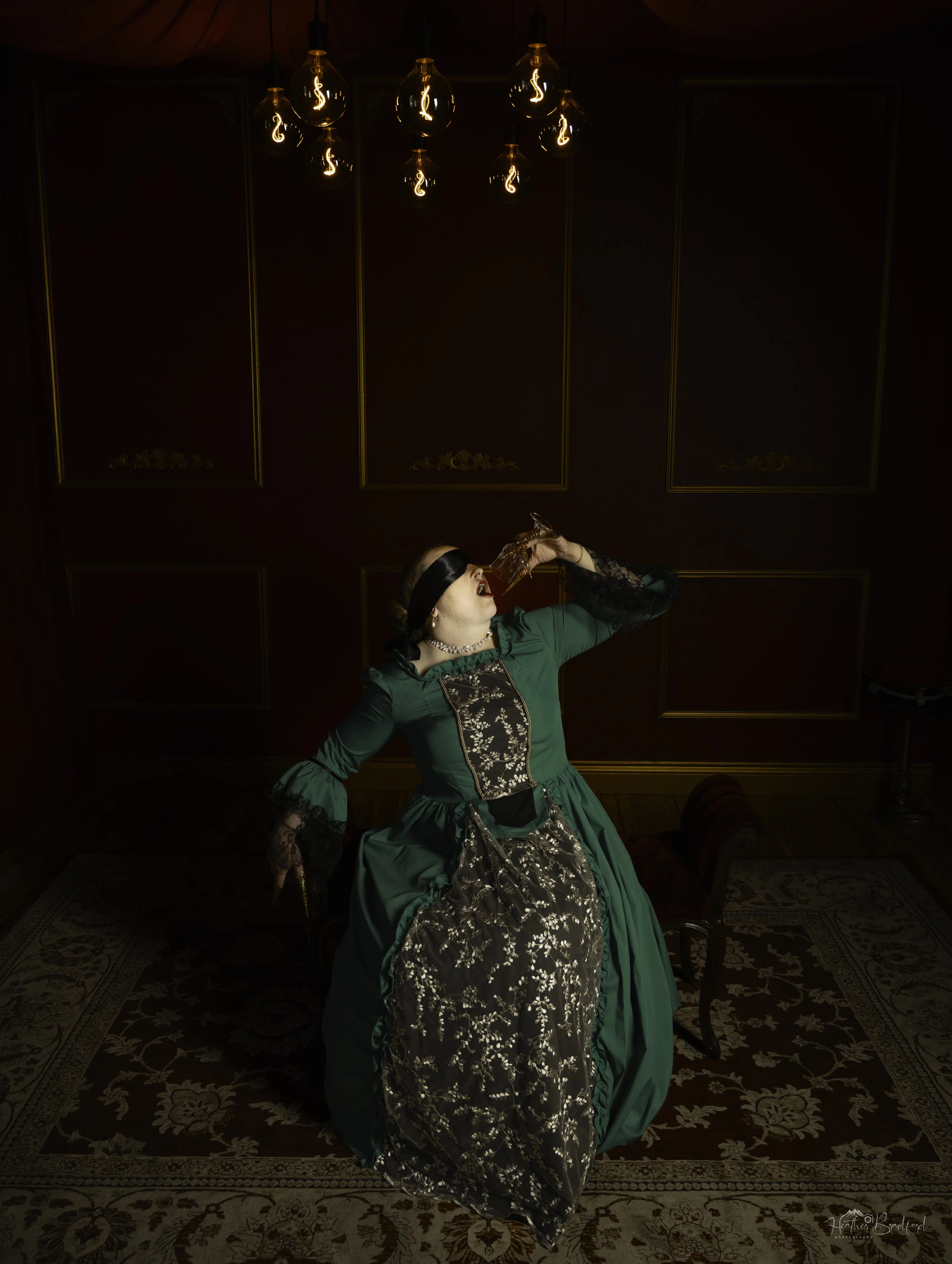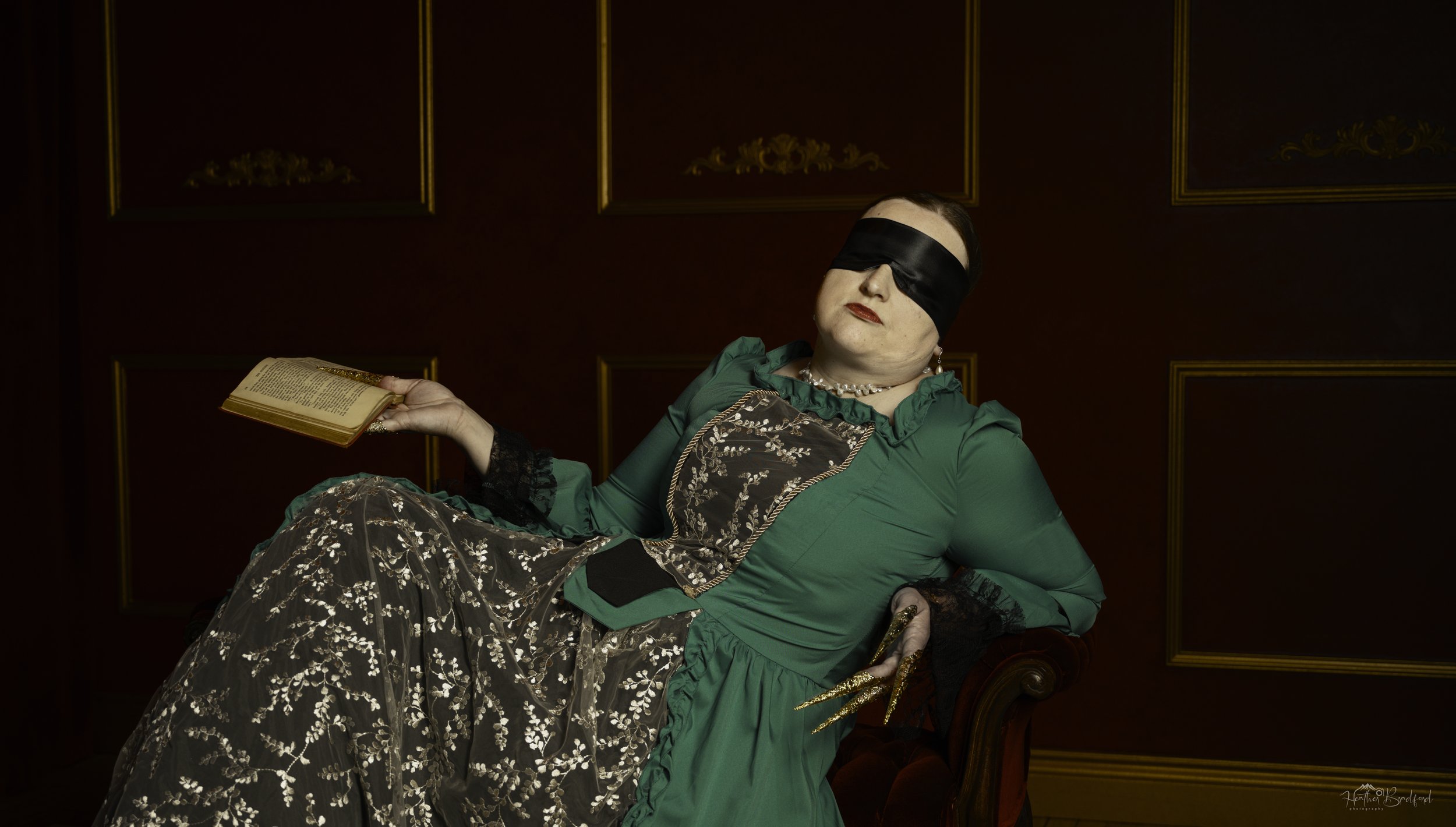
Untangling Complicated Matriarchs:
Luxury and Bone Collection
In this collection, I wanted to break my southern ancestresses free from being of caricatures and explore the complexity of their many roles. The tragic belle, the worried mother, the powerless wife, the evil slave mistress. I depict each of these roles in portraiture, but show a single ancestress experiencing all of them.
I did so because historical records and documents demonstrate that many of these women held each of these roles at different points in their lives. The tragic belle sometimes grew up to be the slave mistress. Other times she grew up to be a homesteader’s wife, leaving the south and its “peculiar institution” behind. One became the wife of a preacher, one the wife of a postman.





















Luxury and Bone: Untangling Our Planter Class Roots
The white women of the antebellum South were not a monolith. Not in the 1800s and not now. This should be obvious, as we are talking about literally tens of thousands of different individuals spread out over two centuries. Unfortunately this is actually a controversial statement in quite a few families and communities. Many would prefer to paint them as caricatures.
Some folks would have us reduce them to put upon saints who did no wrong, who were victims of patriarchy and lacked the legal rights and standing to fully control their own lives. They accurately point out that women were second class citizens in the United States of America, especially during the first few centuries (Clinton 1982, Jones-Rogers 2019). In many states they held a legal status similar to children, but without modern the right to live free of family violence. This allows some descendants today to embrace the Lost Cause myth, and claim that these women bear no responsibility for the horrors of slavery.
But maybe your grandmother didn’t paint them this way, maybe she took a different approach. Perhaps instead she would make them cartoon villains whose sole purpose in life was to bring suffering and misery to the people around them, especially their slaves. The shrewish wife, self absorbed mother, cruel slave mistress. The historical record is full of examples of ladies like this who wreaked havoc, ruining and taking other’s lives (Jones-Rogers 2019).
Though quite popular, both of these caricatures are incomplete. Historical records show us that women of the antebellum south were all of these things, and more. Our ancestresses were real women who held different roles at different times in their lives. They were distinct individuals with their own complicated stories.
Within my own family tree I found great variety. Some ancestresses were rich, some were poor. Some had small families, some had large families. We had slave owners and abolitionists, city dwellers and country dammes. Even within a single generation and in a single region, they were different from one another.
The further you dig down in the records, the clearer it becomes that these people as individuals weren’t monoliths over the course of their own lives either. They were dynamic as time went by. Sure, some were married to steady stable men who lived a life with a steady rhythm. Born in Troup County, Georgia, died in Troup County, Georgia. Born a farmer’s daughter, became a farmer’s wife, died in her son’s farm house. There are threads of consistency in some stories.
But many more experienced incredible changes as they went through life. Born in North Carolina, died in Texas. Married twice, thrice (or even more), to men whose occupation changed radically in each census listing, going from Farmer to Minister to Painter and back to Farmer. They would have understood our modern concept of “This is my _____ era”.
Most did not own slaves, but some did. The ones who owned slaves were economically mixed, with some owning a few people and others owning multiple families. Some were married to men who had assaulted their slaves and records show that they now owned their husband’s children. As a modern woman I have trouble fathoming this. And the probates be damned, freedom and a few acres at the Master’s death does not in fact make up for the affront of slavery and rape.
Coming upon all these records documenting my ancestor’s direct participation in slavery was incredibly upsetting. The first time I literally felt nauseous and almost threw up on my shoes. I had been asking forever “Where were we back then? What were we doing?” Now I had my answer. We were in Georgia, in the Carolinas, in Mississippi and Tennessee. We were doing all kinds of things: working, raising children, engaging with the community. And some of us were doing all this while participating in one of the harshest forms of slavery ever historically documented. Pretty sure I was never supposed to know that part. You probably weren’t either.
But why can’t we know? Because it will hurt our feelings? Because it makes us feel ill? Is that really the priority here, managing the fee fees of modern folks who are uncomfortable with the knowledge that not everyone who came before them was the rugged individualist that stories like to dwell on? Are our modern feelings so delicate that we must erase the suffering and complexity of the past because otherwise we squirm like naughty children? Why can’t we just sit with the discomfort and come through the other side, more knowledgeable and committed to justice?
The answer is: We actually can do it. We can learn and grow, both as individuals and as a people.
I want to stop pretending these women didn’t exist. An end to the “I don’t know her” phenomenon. These women had a lived reality that was complicated and experientially varied. When I talk about them, and when others talk about them, I want that conversation to reflect their lived complexity and depth. No more Lost Cause apologists. No dismissing them as an evil aberration we no longer have to watch out for. Let’s just see them for them.
— Heather May —


